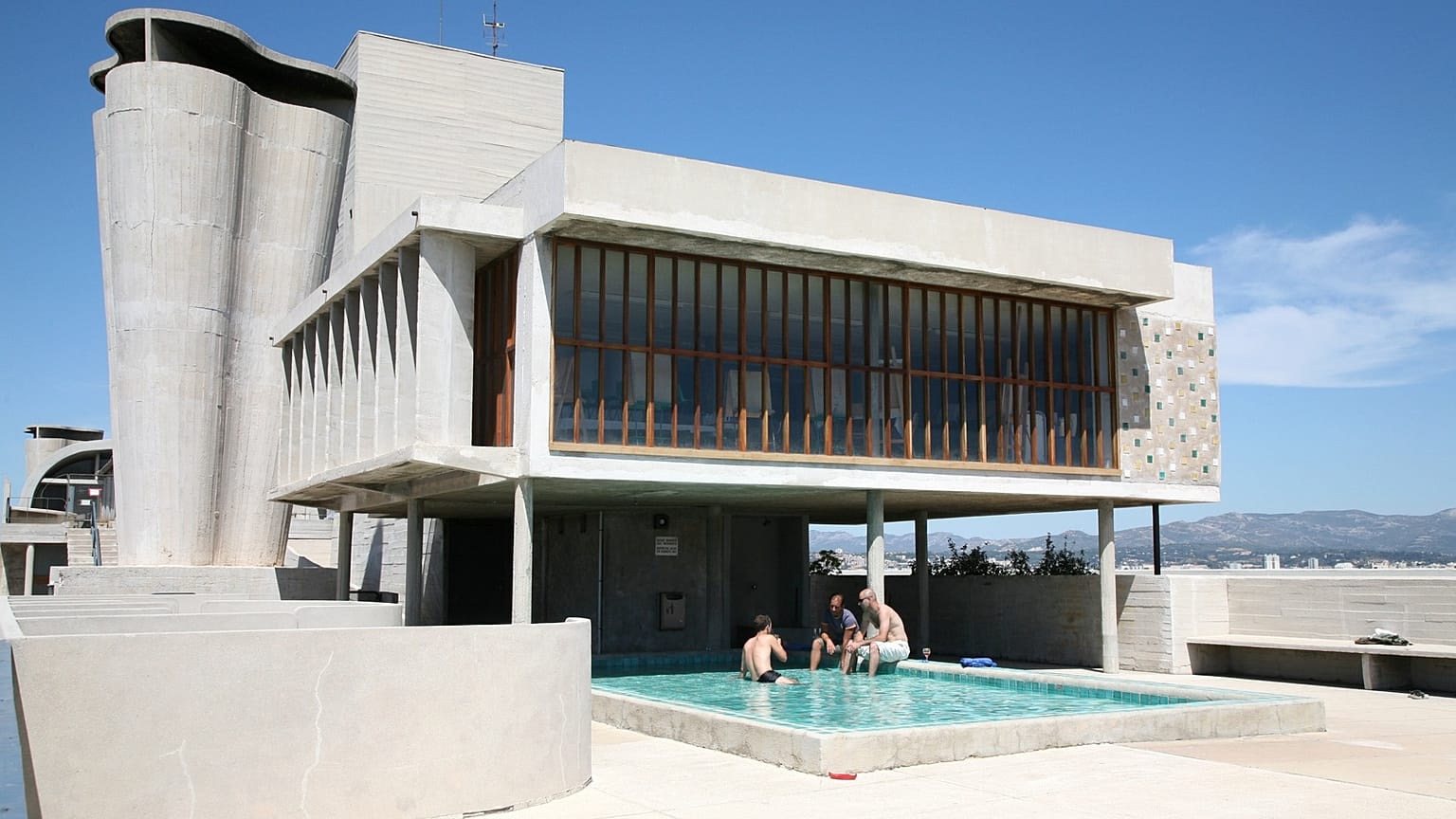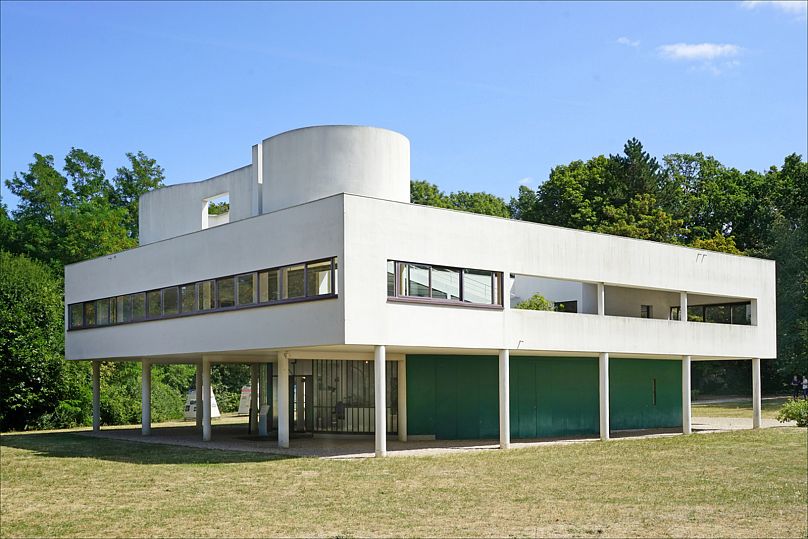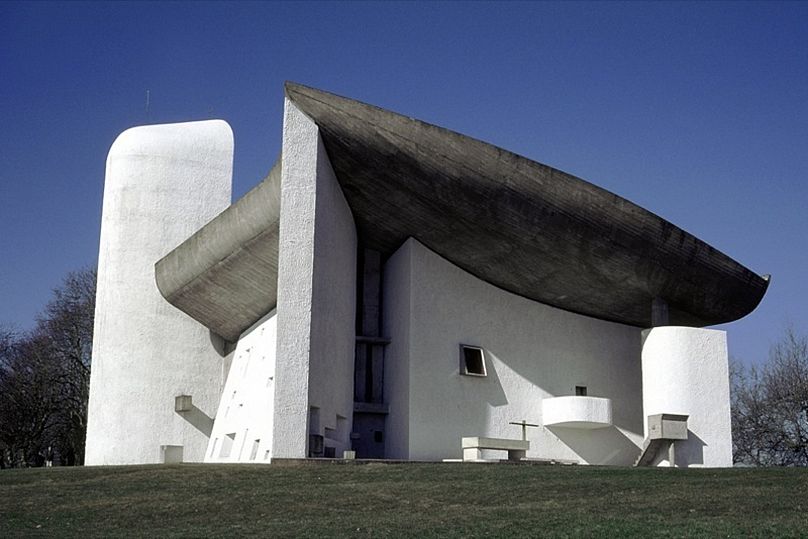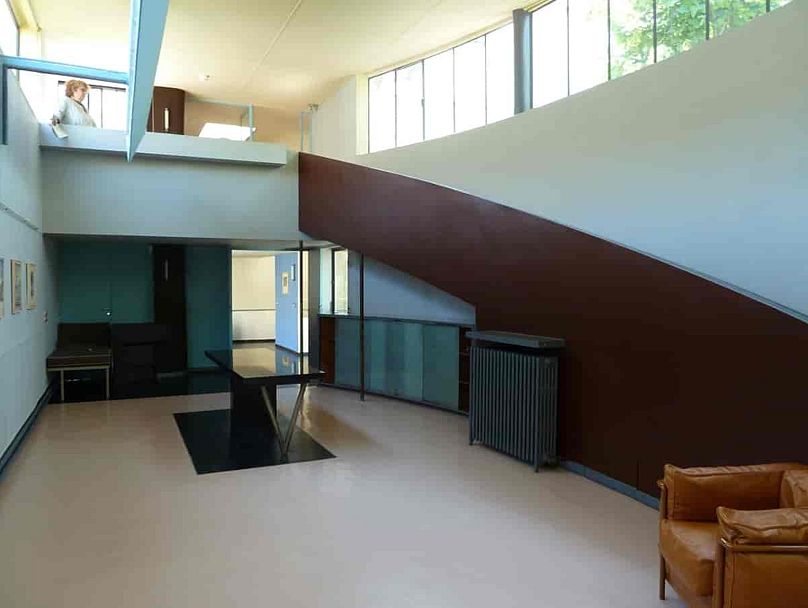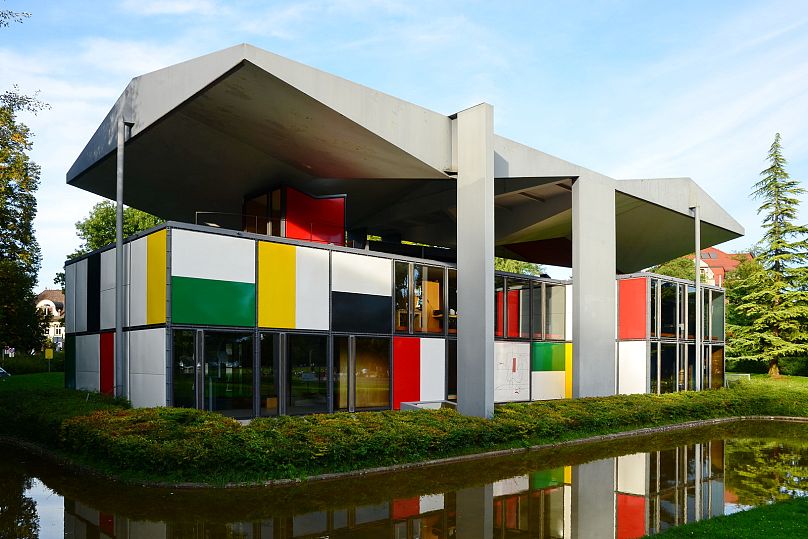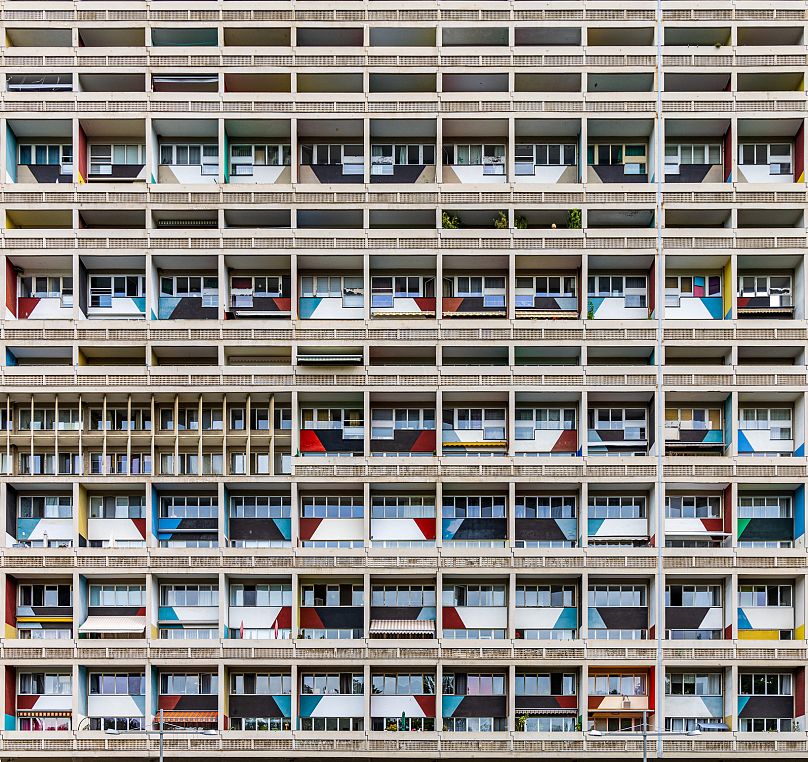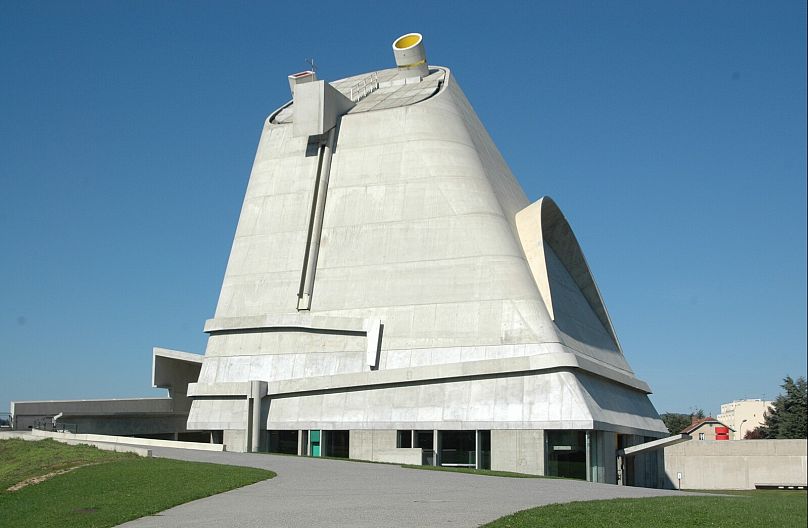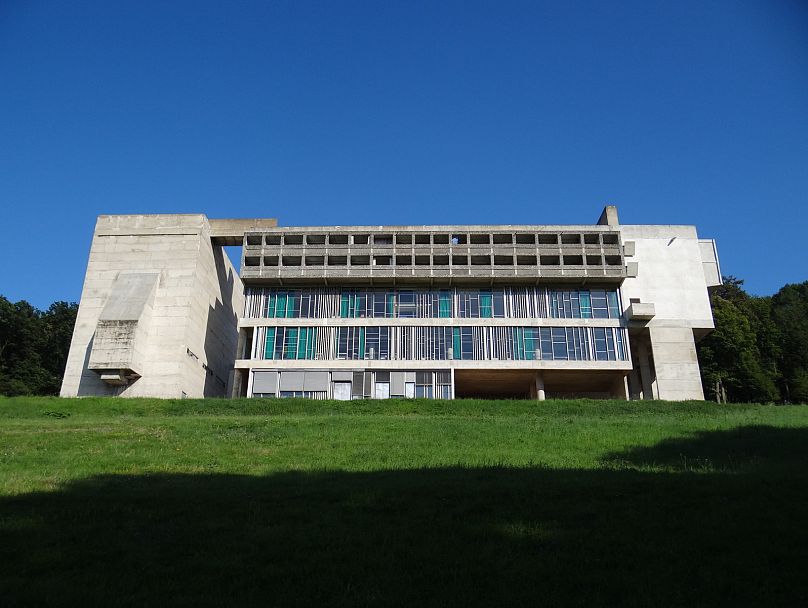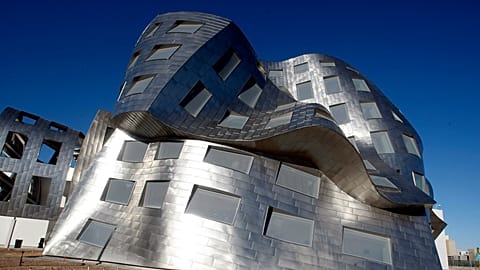The Swiss-French starchitect's foundational book, 'Toward an Architecture', turns 100 this year. The source of both revilement and adoration, Euronews Culture looks at "Le Corb" and the indelible legacy he left behind.
"A house is a machine for living in."
With this brief sentence, Swiss-born French architect and designer Charles-Édouard Jeanneret (or "Le Corbusier") summarised the crux of his functionalist vision in the so-called "manifesto" of modern design, Toward an Architecture (Vers une architecture), which this year celebrates its 100th anniversary.
In a career that spanned from the first years of the 20th century until his death in 1965, Le Corbusier laid the foundations for a new architectural epoch which made him one of the most revolutionary - and consequently, polarising - figures in European and global history.
His sleek, clear geometric designs represented a sharp divide from the more fanciful Belle Époque styles that flourished across Europe in the late 19th and early 20th centuries, and he became one of the key modernist architects at a time of schism with traditionalist schools of thought.
The Swiss-French "starchitect" provided the blueprint of post-war urban designs. In the decades shortly after Toward's publication, gone were the Rococo-recycled frills and neo-Gothic romanticism of fin-de-siècle European styles, as cities around the world were taken over by functional, spacious, concrete buildings.
Le Corbusier's legacy has been decidedly polarising. "Le Corb", as many of his followers affectionately nicknamed him, has seen 17 of his projects designated as a UNESCO World Heritage Site.
Nevertheless, a backlash against the perceived "soulless" and "harsh" aesthetic canons of the modern architecture he inspired - which some deem to have eviscerated European cities of their idiosyncrasies - is on the rise, and has even gained traction on X, the social media platform formerly known as Twitter. And, lest we forget, the architect himself had certain affinities for some of the darker currents of early-20th century history, namely Fascism and Nazism.
Yet, for better or for worse, Le Corbusier's impact on our cityscapes is undeniable. To mark the centennial of his publication, Euronews Culture looks at some of the Swiss-French pioneer's most iconic designs and buildings across Europe.
1. Villa Savoye (Poissy)
Completed in 1931, this villa, considered the crown jewel of Le Corbusier's collection, was built for the wealthy Savoy family, in the Parisian hinterland. Deemed the architect's "Parthenon", it exemplifies the "five points" of architectural theory he outlined in the 1920s, with its clean-cut lines and open space.
2. Notre-Dame du Haut (Ronchamp)
One of Le Corbusier's post-WWII designs, completed in 1955, Notre-Dame is the magnum opus of his ecclesiastical work. Sitting atop the Bourlémont hill in the southern part of the Vosges mountain range, the concrete chapel has a distinctive asymmetrical floor-plan and free-flowing shape which possesses a distinctively natural, almost naïve and childlike, quality. Unsurprisingly, it continues to attract tens of thousands of tourists every year.
3. Maison La Roche-Jeanneret (Paris)
Built from 1923 to 1925, Maison La Roche saw Le Corbusier team up with his cousin, Pierre Jeanneret - his collaborator for the good part of two decades - to design a grand mansion complex for two clients: the former's own brother, Albert Jeanneret, and a wealthy Swiss banker, Raoul La Roche, who wanted a space for his extensive Cubist art collection. The villa's clean, L-shaped white design stands in stark contrast to the neighbouring Parisian Beaux-Arts houses, with their ornate balconies and mansard rooftops.
4. Pavillon Le Corbusier (Zürich-Seefeld)
One of Le Corbusier's last works, Pavillon Le Corbusier was completed in 1967, two years after his death. A Mondrian painting in three-dimensional form, with its multi-coloured blocks and sleek black lines, the Pavillon now hosts a modern art museum which went through a decades-long reconstruction process before opening to the public and being acquired by Zürich's city council in 2014.
5. Corbusierhaus (Berlin)
Few residential apartment blocks are as majestic - and internationally renowned - as Berlin's Corbusierhaus, officially part of the architect's Unité d'Habitation housing projects. Opened in 1958, its mastodontic, unyielding rectangular design is considered one of the pre-eminent examples of brutalism - perhaps the most infamous and divisive of 20th-century architectural styles.
6. Saint-Pierre (Firminy)
Le Corbusier never got to set his eyes on Saint-Pierre, which commenced 8 years after his death, and would only be completed in 2006. All this notwithstanding, the church - one of the architect's three religious designs - has been revered as one of the most influential architectural works of the turn of the millennium.
Its spaceship-like design may evoke visions of UFOs more than those of Jesus, but it was nonetheless awarded second place in the 2010 World Architecture Survey's list of top buildings constructed in the 21st century.
7. Convent of Sainte Marie de La Tourette (Éveux)
For most people, the words "French convent" would conjure images of austere Gothic churches, half-hidden by overgrown ivy, in the middle of the Hexagon’s sprawling countryside.
Le Corbusier's own design for one Dominican priory outside Lyon, on the contrary, would at first sight seem closer to the headquarters of a secret service. The U-shaped monastery, built from 1953 to 1958, has reinforced concrete walls which enclose spacious, spartan halls with views of the genteel Rhône countryside.















